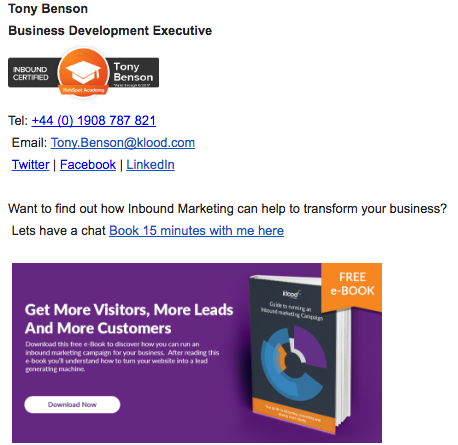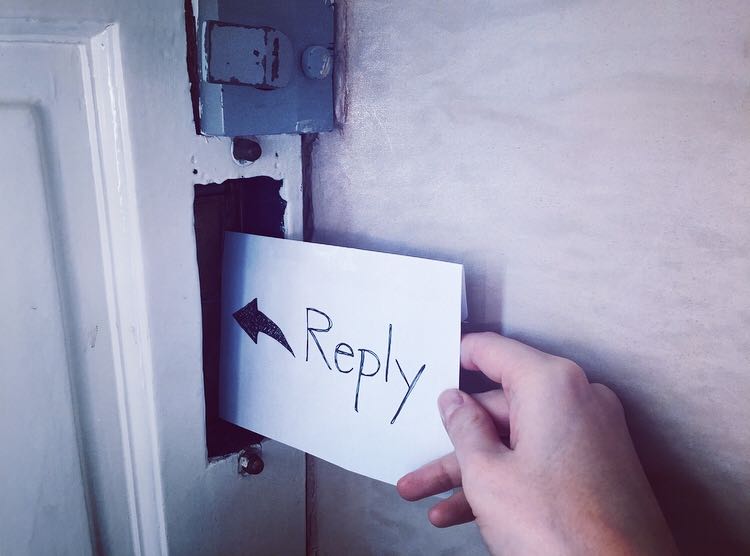
Get weekly
HubSpot updates
So what do I mean by outreach email? Sales and marketers alike typically send hundreds, if not thousands, of emails per week. In some instances these emails are sent to people we don’t know very well, or don’t know at all! These can sometimes be referred to as 'cold emails', and a study by MailChimp shows that open rates for marketing and advertising sit around 18%, and response rates from under 2%. I personally recommend only sending warm emails.
Warm emails, put in simple language, are an email you send to someone that you have researched first. Your email contains something personal to the recipient, for example it might touch on a known pain point or a topic you know they are interested in. These things can be gleaned from social media channels such as Twitter, Facebook and LinkedIn.
With this in mind, I thought it would be useful to give you a guide to the anatomy of an effective outreach email so that you can move away from the old ways, the cold ways.
Subject lines
The subject line is arguably the most important aspect of an outreach email, yet is quite often the last thing that people think about. Salespeople have a history of spending hours slaving over the body of an email but then type the first subject line that comes into their heads.
Remember: the recipient will decide whether or not to open your email based on the relevance of your subject line.
There are lots of different opinions on what makes an effective subject line, so how should you decide which one to go with? For me, it really depends on the purpose of your email, but here are some ideas for you to consider:
Personalisation
This is probably the tactic that I use the most as it is both simple to apply and very effective.
Personalising the email subject in the following ways demonstrates to the recipient believe that you have taken some time to find out about them, and are not just engaged in a copy and paste email campaign:
- If you know the recipient's name use it.
- Thoughts about (their recent post)...
- (mutual connection) suggested we speak…
Urgency or Scarcity
No-one likes to feel like the odd one out, or that they are missing out on something special. Everyone likes to save money or feel that they have found a bargain, so using urgency or scarcity can prompt a prospect to buy now, even if they don’t have an immediate requirement. I believe in operating with honesty and integrity so use these wisely!
- Last chance...
- Don't miss out...
- Only three left…
Ask a question
Not much explanation required here. I love to use this after all my research is completed, and there could still be a number of people with responsibility for the service I am offering. My personal favourite is the third option below:
- Have you considered...
- Quick question…
- Appropriate person?
Don’t be afraid to combine them. I nearly always use personalisation as well as one of the above for example: “Jane, Quick question” or “are you the appropriate person John?”
Salutation
Personalisation is important here too, as there are a number of salutations that are common-place, such as ‘Hi’, ‘Hey’ and ‘Dear’, but these are not always appropriate. You want to come across as friendly and not “salesy”, so use the prospect’s first name if you know it i.e ‘Hi Jane’.
What if you don’t know the prospects name? I wouldn’t even think of sending an email until I have completed my research! If you don’t know who is responsible for making decisions about the service you are offering, chances are you’ll be wasting your time. Best results from outreach emails come when used in-line with the Inbound Marketing methodology.
Notice I said ‘friendly’. Be wary of becoming over familiar here, and avoid casual greetings like ‘Yo’ or ‘What’s up’ that you may use with a real friend! Also take into account your location as local colloquialisms may not be suitable.
Body
The body of your email should be kept short, sweet, to the point and relevant to the prospect. They need to very quickly understand the purpose of your email, and what value you are offering them. For example, the majority of outreach emails are attempting to arrange a telephone conversation, so make sure you clearly emphasise the value of that call to your prospect.
How many cold emails do you think your prospect receives a day? How many do you think they actually open? Of the few they do open, how many do you think look a bit like this:
“Hi Jane
My name is Tom and I work for company X. We are the worlds greatest at everything…..”
There is a time and place for an “elevator pitch” but let’s be honest with ourselves: people generally don’t give a hoot about us, and will switch off unless there is something in it for them! So make sure the email is about them and not about you.
Talking about ‘switching off’, if your email is text heavy and looks like it will take a while to read, chances are your prospect will either skim it or won’t bother at all! If you have important information that you want to stand out, use bullet points, underline or emphasise it in bold or italics.
Advancements in technology means that a lot of us now open our emails on our mobile or tablet, so make sure that your copy is mobile friendly. Ideally you don’t want your prospect to have to scroll down more than once, so I suggest no more than 4-5 sentences or short paragraphs.
Often when trying to get a prospect to agree to a telephone meeting salespeople use terms like “schedule a meeting” which has more of an immediate feel to it. Have you looked at your calendar recently to fit in an urgent meeting? Chances are their schedule is pretty full but they may well have a gap in their calendar over the next week or so
Complimentary Close
The complimentary close is what comes at the end of the email, immediately before the signature of the email to express the sender’s regard for the receiver.
Make sure your choice is appropriate to the recipient and is professional as well as favourable. Do not become over familiar as this can be offensive.
I tend to use “Regards, Sincerely or Thanks for your consideration” for professional outreach emails, but where there is a higher level of rapport or a relationship has been built over time I opt for “Best regards, All the best or Kind regards. It is important to use the relevant intimacy so avoid using “yours truly” or “sincerely yours” in an outreach email!
Signature
I’ve read a lot of different views on the perfect email signatures. Should you include your email address when they already have it? Does your job title matter? Should you include your full name?
All of these are great questions, and in my opinion the answer is yes to all of them. I like to make it as easy as possible for my prospects to contact me. Most people will also want to check you out on LinkedIn or Twitter, so add these links to your signature too.
Another great tool to include in your signature is a meeting link. There are several options for this including Hubspot, Calendly or YouCanBook.me.
Finally, I suggest that you include a CTA (call to action) in your signature, to promote your latest and greatest offer. Be mindful that you will need to update this regularly.
Here is an example of one of my signatures:

As you can see, there are a number of elements that make up the perfect outreach email, and even more variables to consider. My advice would be to, as you should do with everyone, test and analyse to identify what works best for you, although this may well differ from industry-to-industry, prospect-to-prospect.

